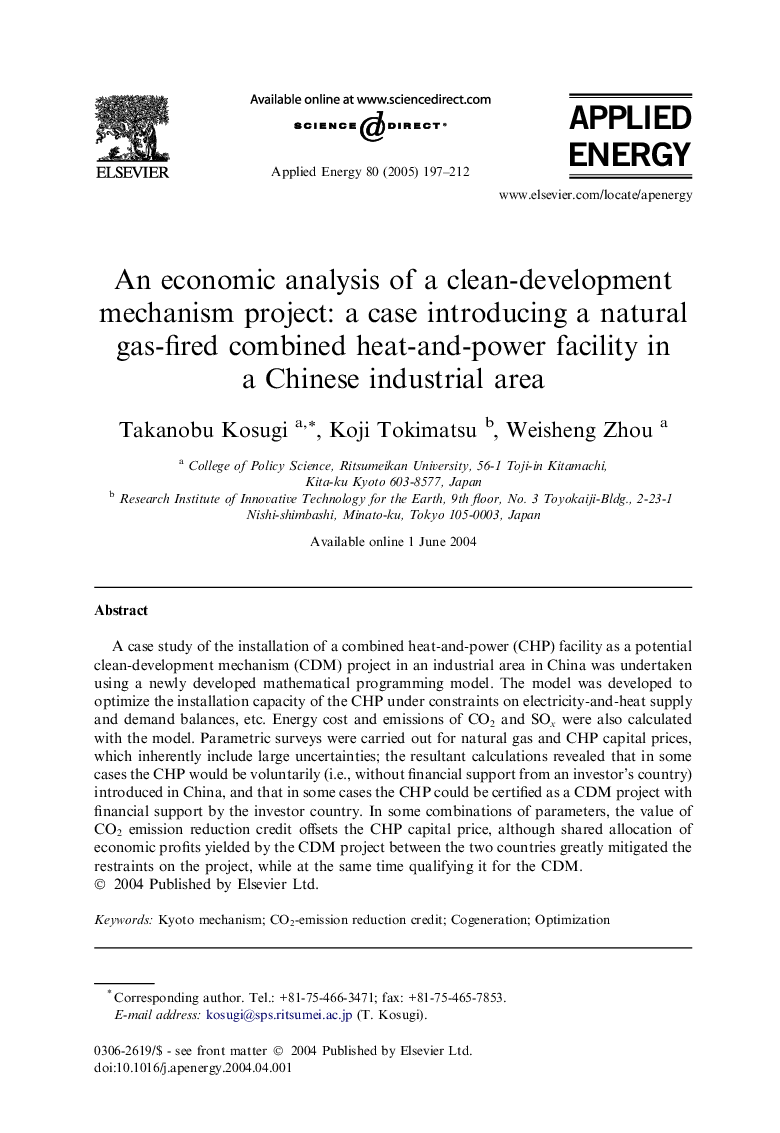| Article ID | Journal | Published Year | Pages | File Type |
|---|---|---|---|---|
| 10282129 | Applied Energy | 2005 | 16 Pages |
Abstract
A case study of the installation of a combined heat-and-power (CHP) facility as a potential clean-development mechanism (CDM) project in an industrial area in China was undertaken using a newly developed mathematical programming model. The model was developed to optimize the installation capacity of the CHP under constraints on electricity-and-heat supply and demand balances, etc. Energy cost and emissions of CO2 and SOx were also calculated with the model. Parametric surveys were carried out for natural gas and CHP capital prices, which inherently include large uncertainties; the resultant calculations revealed that in some cases the CHP would be voluntarily (i.e., without financial support from an investor's country) introduced in China, and that in some cases the CHP could be certified as a CDM project with financial support by the investor country. In some combinations of parameters, the value of CO2 emission reduction credit offsets the CHP capital price, although shared allocation of economic profits yielded by the CDM project between the two countries greatly mitigated the restraints on the project, while at the same time qualifying it for the CDM.
Keywords
Related Topics
Physical Sciences and Engineering
Energy
Energy Engineering and Power Technology
Authors
Takanobu Kosugi, Koji Tokimatsu, Weisheng Zhou,
